-
 Want to Pamper Your Taste-Buds this Pongal? Here are Mouth-Watering Pongal Recipes You can't Miss in 2019
Want to Pamper Your Taste-Buds this Pongal? Here are Mouth-Watering Pongal Recipes You can't Miss in 2019
-
 Diwali Snacks You Can Make in Your Kitchen, which Are As Healthy As They Are Delicious! (2021)
Diwali Snacks You Can Make in Your Kitchen, which Are As Healthy As They Are Delicious! (2021)
-
 Make Gifting Easy this Festive Season with a Gift Pack: 11 Awesome Ideas for Diwali Gift Packs for 2019
Make Gifting Easy this Festive Season with a Gift Pack: 11 Awesome Ideas for Diwali Gift Packs for 2019
The Mouth-Watering Onam Sadhya

Onam Sadhya is a feast that you must try at least once in a lifetime. Clad in traditions and culture, this feast speaks of brotherhood and love. The Onam Sadhya is not only sought after for its delicious dishes but also because it is immensely healthy for the body. Each meal is a medicine in itself.
The Story of Onam

Kerala was once ruled by an Asura king. Unlike the reputation usually goes, this king was generous, judicious, and wise. During his reign, there was no poverty; not one soul knew hunger, no crimes, no corruption, and no discrimination. One and all lived a life of prosperity and undying happiness. The land knew no unlawfulness and disease; it was indeed god’s own country, ruled by an Asura. The popularity and love of this dear king spread in every direction. He was loved deeply by his people. And the king was none other than King Mahabali, a true Lord Vishnu devotee.
As his reign gained popularity, the gods feared his supremacy and became extremely jealous. Feeling threatened, the gods together strategized to get rid of this noble king. This is when, to solve the dilemma of the gods, Aditi, the mother of gods, approached Lord Vishnu with the matter. Lord Vishnu decides to test King Mahabali and takes up the form of a poor brahmin, Vamanan and asks the king for a piece of land. The king being generous asks the brahmin to take up whatever land he needed. Vamanan grows into size beyond comprehension and covers the earth and skies in the first two steps. For taking the third step, and to keep his word, king Mahabali bends his head in front of the brahmin and is sent to the nether world.
Lord Vishnu, impressed by the nobility of the king, asks him for any boon, and the king asks for permission to visit his people in Kerala every year. And it is in the memory of King Mahabali, that Onam is celebrated. Today, it is marked with flowers, delectable food, decorations, and new clothes. Reminiscing the old reign of the king, and showing him that his people are still happy. A lovely tradition, isn’t it?
The Mallu Banquet
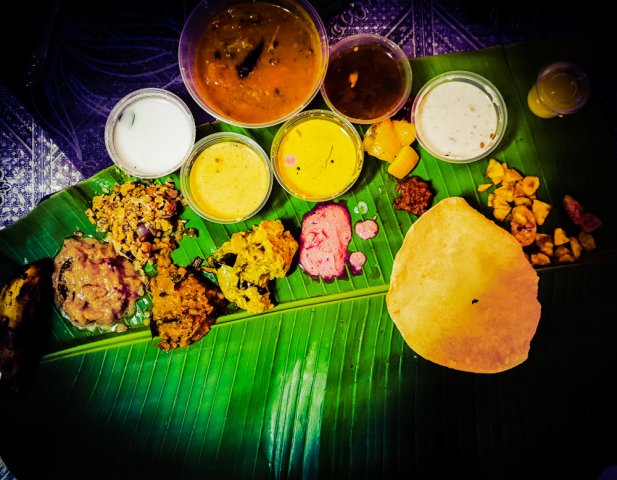
A typical Sadhya has around 24-26 dishes, and this could go up to 64 on a special Sadhya such as the Aranmula Sadhya. The greatest attraction would be that each recipe in Onam Sadhya is vegetarian. Everything is cooked in traditional ways with a generous amount of coconut and coconut oil. Most of the vegetables used in each dish are repeated, and hence it may appear that each dish will taste the same. No! Each dish tastes different and is made in such a way that each taste bud is addressed.
The Long List of Onam Dishes

Our Secret Onam Sadhya Tips
Preparing an Onam Sadhya is not an easy task. Lots of dishes require a lot of work and preparation. Hence, for helping you, we have provided here some secret tips and tricks. This will make things much easier for you.
Keep the Veggies Ready
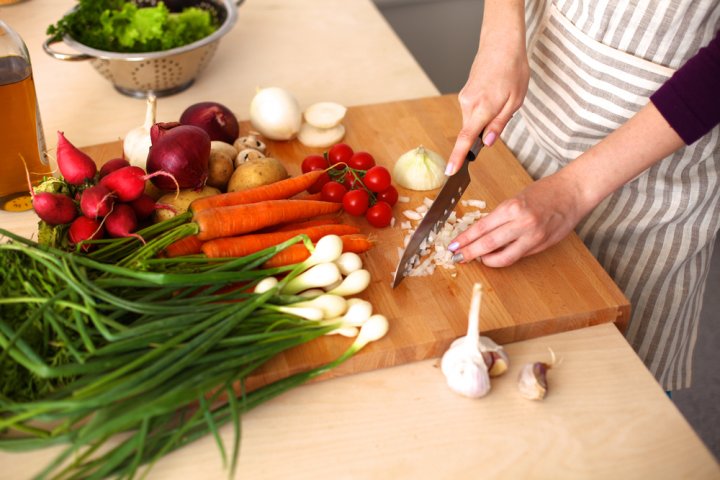
Onam Sadhya is a feast entirely based on vegetables, and the best part is that the same vegetables form a part of multiple dishes. So, the first thing you must do is make a list of the dishes you will be going to make. Once the list is made, make a comprehensive list of each vegetable, on how much you will need on the whole.
Peel and clean the vegetables the evening before you make the feast. This would save you a lot of time cooking. For dishes where the veggies have to be cut into smaller pieces, chop, and store in airtight containers in the fridge. For recipes like avial and sambar, chopping and storing the vegetables in water would suffice. This would also prevent blackening of veggies until cooking time. Now for the pro tip, lather your hand with cooking oil before you cut yam. This would prevent itching to a great extent.
Choose the Right Masalas
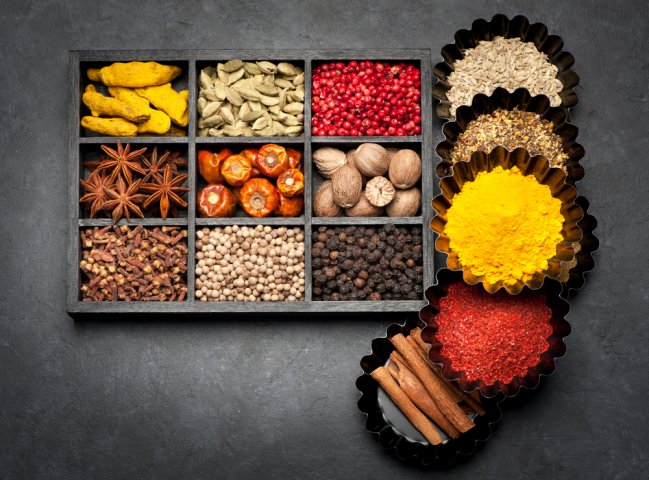
The masalas determine the taste and quality of the food. Make sure you use south Indian masalas to get the real and authentic south Indian taste. Turmeric powder, coriander powder, chilli powder, fenugreek, cumin, tamarind, and asafoetida are irreplaceable, so make sure you stock them before you start cooking. And for sambar, we suggest you get a leading sambar masala powder from a store. It is a tad bit difficult to recreate the taste.
Stick to Traditional Recipes & Ingredients
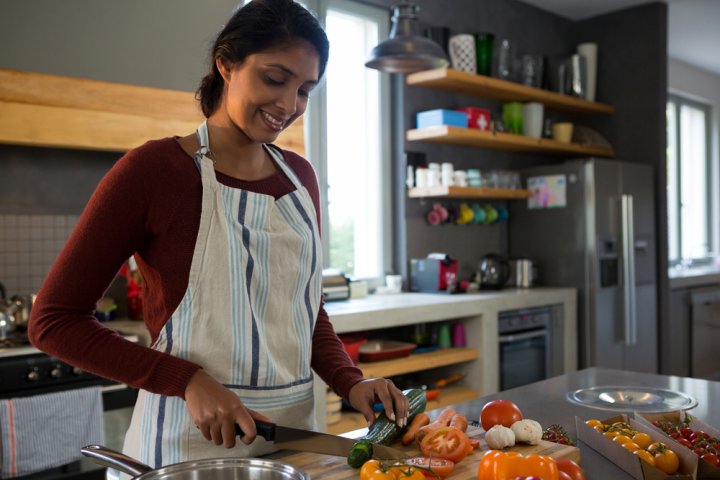
Onam Sadhya is a traditional feast, and it is best if you stick to traditional recipes. You will find lots of recipes on the internet that are modern-day twists to age-old recipes. We urge you to go for the most authentic ones, as those are the recipes that you should really try. They are sure to take you to gastronomical heaven.
Plan & Start Early

Sleep early the day before, and make sure you have an early rise. Preparing and plating these many dishes is not an easy task. Keep everything, including the masalas and vegetables ready. Take out the required utensils and make sure to have everything within your hand’s reach before you start. Also, plan on the cooking time, and start preparing those dishes first which take the longest to prepare, such as sambar.
10 Dishes You Can Prepare on Onam
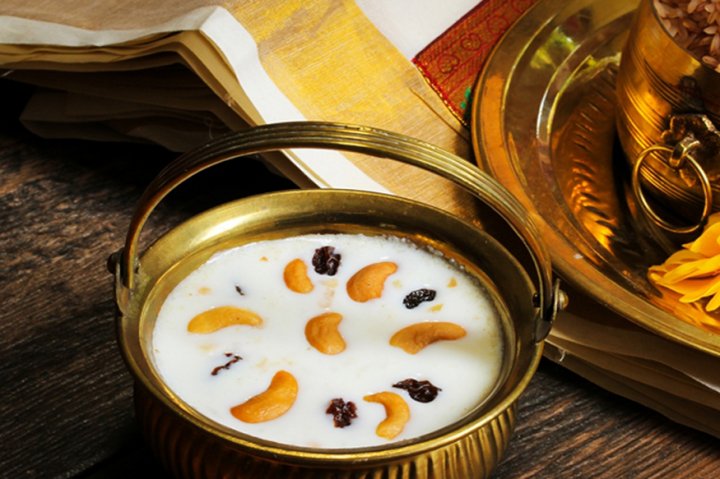
Now you already know, a Sadhya is a beautiful cluster of so many dishes and flavours, but there are a few out of the slot without which the Sadhya lacks soul. These are the dishes that make or break the Sadhya. A Sadhya would most definitely seem incomplete without them. Here we give you the recipes of these dishes, the spine of the Onam Sadhya. Even with just these dishes, you will have a soul drenching delicious feast!
Parippu
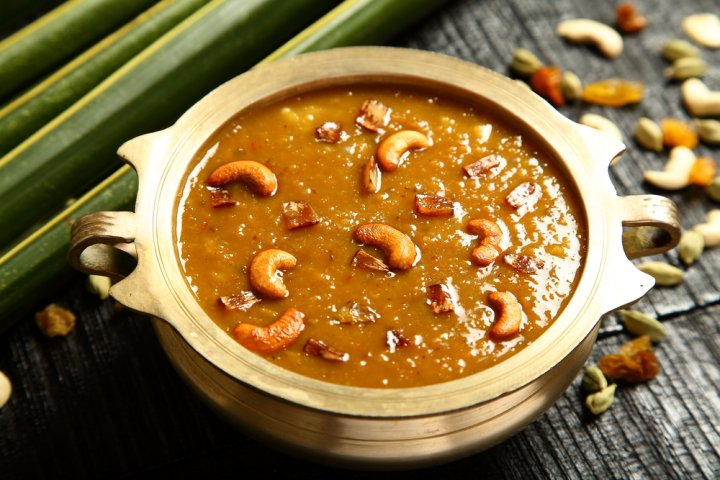
Avial
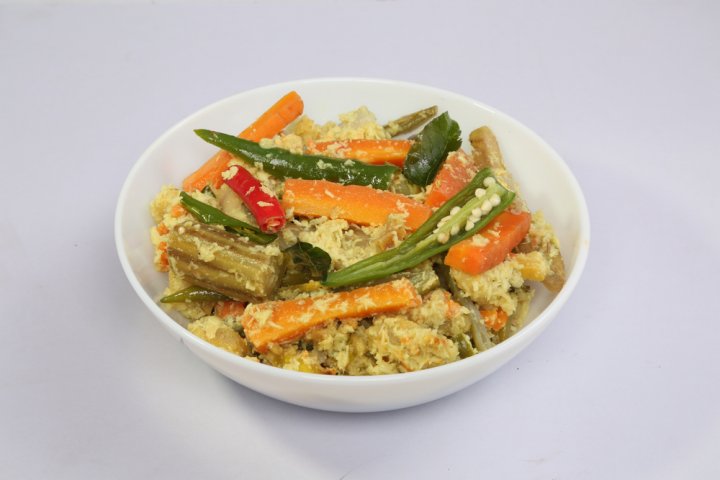
Erissery

Sambar
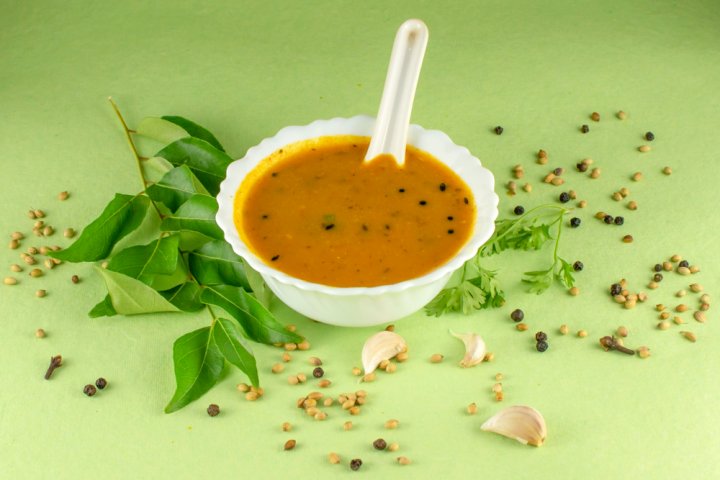
Pachadi

Inji Curry
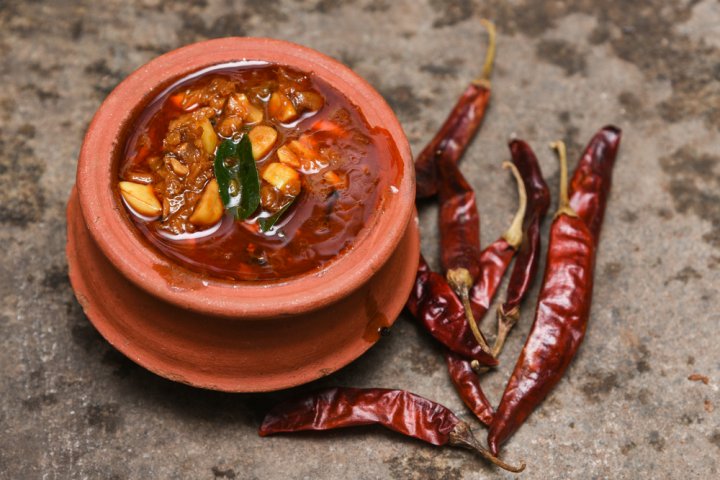
Kalan
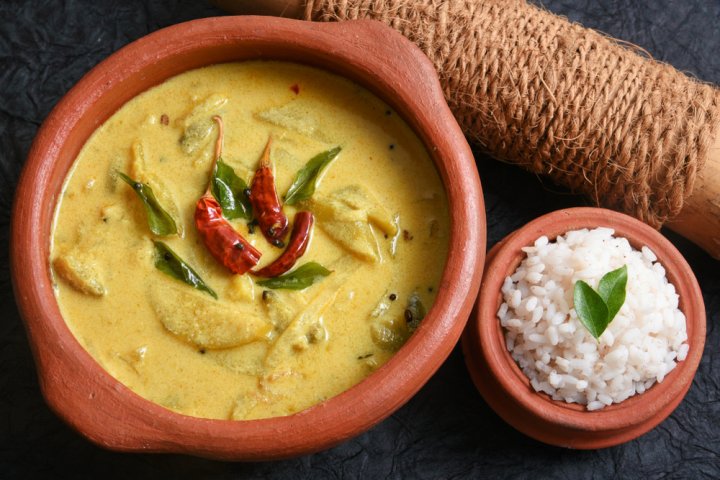
Kootu Curry

Ada Pradhaman
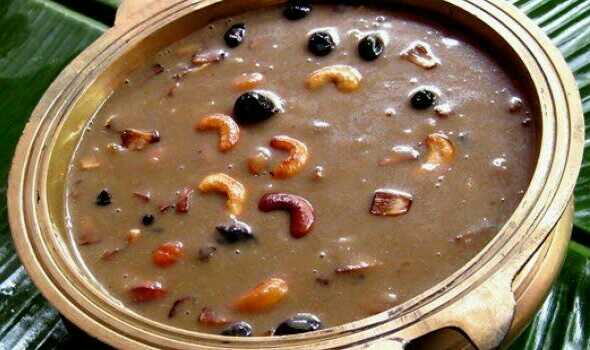
Pulisseri
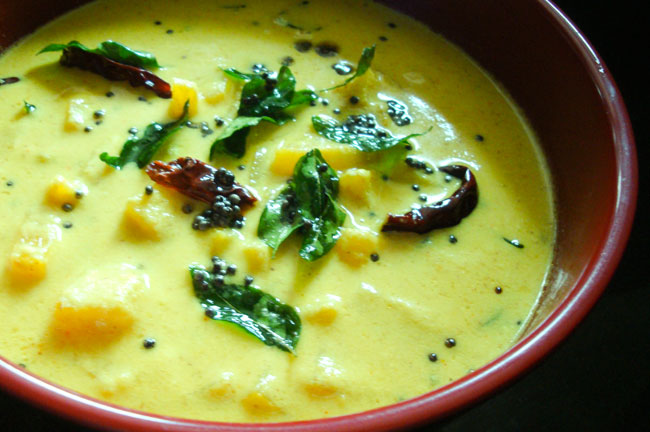
-
 Diwali Snacks You Can Make in Your Kitchen, which Are As Healthy As They Are Delicious! (2021)
Diwali Snacks You Can Make in Your Kitchen, which Are As Healthy As They Are Delicious! (2021)
-
 भारतीयों का मिठाई के लिए एक विशेष झुकाव है: 10 सबसे स्वादिष्ट भारतीय मिठाइयाँ विकल्प जिन्हे देख कर आपके मुंह में पानी आ जायेगा (2019)
भारतीयों का मिठाई के लिए एक विशेष झुकाव है: 10 सबसे स्वादिष्ट भारतीय मिठाइयाँ विकल्प जिन्हे देख कर आपके मुंह में पानी आ जायेगा (2019)
-
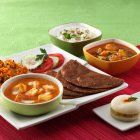 Fasting Does Not Mean Starving! Keep Your Energy Up with These 9 Delicious Navratri Recipes & Fasting Tips for Navratri (2019)
Fasting Does Not Mean Starving! Keep Your Energy Up with These 9 Delicious Navratri Recipes & Fasting Tips for Navratri (2019)
-
 Planning to Fast During Navratri? Here are 9 Quick and Healthy Recipes for Your Navratri Fast in 2019!
Planning to Fast During Navratri? Here are 9 Quick and Healthy Recipes for Your Navratri Fast in 2019!
-
 क्या आप नवरात्रि के लिए उपवास कर रहे हैं? यहां आपके लिए 9 नवरात्रि व्यंजन बनाने की विधि है जो आपके लिए शुद्ध, स्वादिष्ट और स्वस्थ की गारंटी है (2020)
क्या आप नवरात्रि के लिए उपवास कर रहे हैं? यहां आपके लिए 9 नवरात्रि व्यंजन बनाने की विधि है जो आपके लिए शुद्ध, स्वादिष्ट और स्वस्थ की गारंटी है (2020)
Cooking is All About Experiment
Maybe this year, bring about some slight and delicious changes to the Onam Sadhya meal. Try out various spices and recipes for different dishes and experiment till you've prepared the best Onam Sadhya your family has ever had!

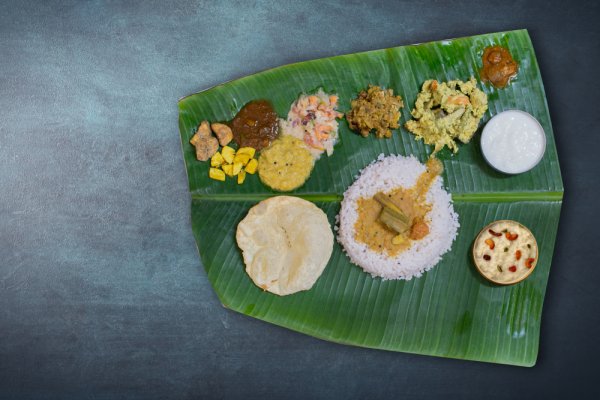
 Highlight the Best Facets of Your Incomparable Beauty: Discover the Best Face Highlighter Currently Available in India and Everything You Need to Know About Using Face Highlighters for Maximum Effect (2023)
Highlight the Best Facets of Your Incomparable Beauty: Discover the Best Face Highlighter Currently Available in India and Everything You Need to Know About Using Face Highlighters for Maximum Effect (2023)
 Forget the Blemishes and Get that Picture Perfect Flawless Radiance on Your Face: Check out the Best Foundations for Oily Skin Currently Available in India and Everything You Need to Know About Makeup Foundations (2023)
Forget the Blemishes and Get that Picture Perfect Flawless Radiance on Your Face: Check out the Best Foundations for Oily Skin Currently Available in India and Everything You Need to Know About Makeup Foundations (2023)
 Make Your Presence Felt Wherever You Go: Discover the Best Perfumes Under 2000 for Both Men and Women to Announce Your Arrival and Make Any Occasion Memorable (2023)
Make Your Presence Felt Wherever You Go: Discover the Best Perfumes Under 2000 for Both Men and Women to Announce Your Arrival and Make Any Occasion Memorable (2023)
 Protect Your Oily Skin from the Harmful Rays of the Sun: Discover the Best Gel Based Sunscreens for Oily Skin and Everything You Need to Know Before Buying One (2023)
Protect Your Oily Skin from the Harmful Rays of the Sun: Discover the Best Gel Based Sunscreens for Oily Skin and Everything You Need to Know Before Buying One (2023)
 Minor Blemishes and Wrinkles Affecting Your Confidence? Check out the Best BB Creams to Conceal Your Worries and Nourish Your Skin to Restore the Healthy, Radiant and Glowing Complexion Back Again (2023)
Minor Blemishes and Wrinkles Affecting Your Confidence? Check out the Best BB Creams to Conceal Your Worries and Nourish Your Skin to Restore the Healthy, Radiant and Glowing Complexion Back Again (2023)
